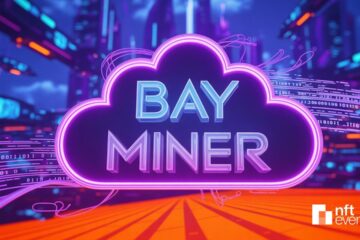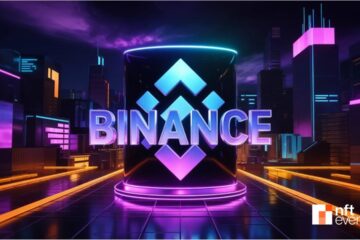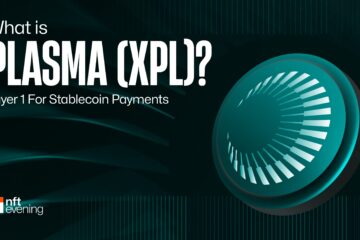Three years ago, the digital economy and the art world experienced one of the most extraordinary crazes in recent history as NFTs (nonfungible tokens) skyrocketed in popularity and value.
These unique digital assets became both a financial and cultural phenomenon, with wealthy individuals and major organizations investing millions into a new market that promised to be both widely innovative and exclusive.
NFT’s boom was largely driven by the rising value of cryptocurrencies. However, the NFT market and digital art sector weren’t the only industries experiencing a transformative era as a result of the rising adoption of crypto; so too were online casinos. Many online crypto casinos like Dis casino gained momentum due to the rising value of crypto. At these online casinos, players enjoy enhanced anonymity, faster payouts, and elevated security measures, while using the communication benefits of the Discord platform. With the resurrection of NFTs, it’s even possible to create NFT slots, NFT poker, and NFT whatnots at some iGaming websites.
While the NFT craze is not at the same level as what it once was, the market is experiencing a resurgence of sorts.
The Rise of NFTs
Davis referred to the events of 2021 as utter mania and added to that statement with a quippy remark about how manias are also fun.
The moment that the world began to realize the enormous potential of nonfungible tokes came when the former head of digital art at Christie’s, Noah Davis, facilitated an NFT sale of Mike Winklemann’s (also known as Beeple) digital artwork Everydays: The First 5000 Days for $69.3 million with the crypto Ether.
Winklemann’s landmark sale put NFTs on the map and catapulted these unique digital assets into the mainstream market, arousing interest from all sorts of individuals, not just art enthusiasts.
NFT collectors went as far as spending $230 million on NBA Video Highlights that were made into unique digital files, while another anonymous collector bid $560,000 for an NFT on a column about NFTs written by a New York Times reporter.
Another phenomenon in the NFT world during its surge in 2021 was the considerable amount of people, generally young males, who were swept up in the craze to purchase and sell NFT apes from popular NFT collections such as Bored Ape Yacht Club and Pudgy Pidgeon. These collections were made up of CG (computer-generated) artworks of cartoonlike apes and sold for anything from tens of thousands to millions of dollars each on online NFT marketplaces like Open Sea.
Owners of Bored Ape NFTs made these digital artworks their online avatars, which in turn symbolized their memborship to an exclusive club that offers these collectors exciting perks such as access to ApeFest, which featured a star-studded line-up with the likes of Chris Rock and The Strokes performing at the exclusive event.
During the peak of the NFT craze, many celebrities like Jimmy Falon and Paris Hilton showcased their Bored Ape digital artworks on The Tonight Show, further supercharging the craze. This led to Yuga Labs’, a community member of the ApeCoin, reaching a value of $4 billion, which was on par with Disney’s recent acquisition of LucasFilms, which would see mega franchises like Star Wars and Indiana Jones now under Disney’s ownership.
The Decline of the NFT Market
Fast forward to 2024 and the NFT market has not managed to regain its same value as it did a few years ago. Zeke Faux, the author of Number Go Up: Inside Crypto’s Wild Rise and Staggering Fall, took this sentiment to extreme lengths and even commented that the NFT space is dead.
The main reason behind his view is that the NFT trend was largely dependent on the soaring value of cryptocurrency. However, despite the crypto market bouncing back after a two-year slump and reaching record highs, the NFT market has failed to regain its previous hype and has experienced a drop in cultural relevance.
There is no doubt that NFTs had significant cultural relevance when the market was peaking; however, much of its initial enthusiasm from investors was backed by financial speculation rather than solid evidence of a sustainable market. The massive spikes in values for cryptocurrencies like Ether only fueled the craze, as the market could be likened to a modern-day gold rush. Promises of wealth and the pursuit of profit undermined the genuine interest or underlying value of the digital art itself.
When Faux was still busy writing his book in 2022, NFT prices were already sinking. The author purchases a Mutant Ape NFT, which was part of a spinoff collection produced by Yuga Labs, for $20,000 for the sole purpose of gaining access to an ApeFest party so that he could research his book. To put this in perspective, a similar NFT was sold for almost double that amount just weeks earlier.
Today in the current market, the least expensive Bored Ape on sale is known as the “price floor can be purchased at around $70,000 according to recent prices from NFTpricefloor.com. In April this year, a similar NFT was valued 90% lower than what it was in 2021. However, many NFT values have increased alongside cryptocurrencies like Mutant Ape, which is currently priced at approximately $12,800, thus showing signs that the NFT market may be on the verge of experiencing a resurgence.
NFTs are Bouncing Back
Despite the overall downturn, various NFT collections managed to retain their value and many investors plan to stick with the NFT market. Popular NFT collections like Pudgy Penguins still manage to maintain relevance within the digital art space (with its NFT floor price sitting at around $50,000) and beyond through branching into other lucrative avenues.
The collection’s creators launched a line of plush toys available at major retailers like Walmart, generating millions in revenue. Similarly, Doodles, another popular NFT series, expanded into diverse ventures, including digital wearables, a record label, and collaborations with high-profile figures like Pharrell Williams, who serves as the brand’s creative director.
These examples highlight a critical shift in the NFT market: the need for tangible utility and community engagement. As speculative trading diminished, projects that offered real-world applications or sustained cultural relevance stood out in a crowded field. Yet for many early adopters, the dream of striking it rich through NFT trading faded, replaced by a more pragmatic approach to the technology.
One area where NFTs have maintained a degree of legitimacy is the art world. Prestigious institutions and events, such as Art Basel Miami Beach, continue to explore the intersection of digital technology and traditional art. In 2023, Sotheby’s set a record for algorithmically generated art with the sale of a piece from Dmitri Cherniak’s Ringers series for $6.2 million. Museums have also begun to embrace blockchain art, with the Los Angeles County Museum of Art acquiring its first NFT. While these milestones indicate growing institutional recognition, they also signal a transition from a speculative frenzy to a more thoughtful integration of NFTs into the broader art landscape.
Shifting Trends in Digital Assets
While NFTs are making a comeback so is the general interest around other digital assets. Meme coins, cryptocurrencies inspired by internet jokes, became the new focal point for speculative investors. Tokens like Dogecoin and Bonk gained traction, often riding waves of viral popularity. Even celebrities joined the trend, with rapper Iggy Azalea and former NBA star Scottie Pippen launching their own meme-based currencies. These developments underscored the adaptability of digital asset markets, where trends shift rapidly and unpredictably.
A New Era of Digital Art
For those still active in the NFT space, the focus has shifted from rapid trading to long-term value creation. Former Christie’s digital art head Noah Davis, who played a key in the $69.3 million sale for Beeple’s Everydays: The First 5000, helped drive the initial NFT Mania, and three years later has now co-founded Fountain, a brokerage aimed at connecting buyers and sellers of high-value digital art.
This new phase of the market prioritizes artistic integrity and sustainable growth over quick profits. Fountain has facilitated significant transactions, such as the sale of a rare CryptoPunk alien NFT and a set of 10 Autoglyphs, each exceeding $10 million. Events like Art Blocks, hosted by generative art platform Art Blocks, continue to draw dedicated enthusiasts, demonstrating that NFTs still hold appeal for a committed community of collectors and creators.
As the speculative energy that once defined the NFT market dissipates, the industry faces a critical juncture. Projects with genuine artistic or practical value are more likely to endure, while others risk becoming relics of a fleeting trend. Whether NFTs will achieve their transformative potential in art, finance, and technology remains an open question, but their story thus far offers valuable insights into the intersection of culture, innovation, and human behavior.
 Bitcoin
Bitcoin  Ethereum
Ethereum  Tether
Tether  XRP
XRP  USDC
USDC  TRON
TRON  Lido Staked Ether
Lido Staked Ether  Dogecoin
Dogecoin  Figure Heloc
Figure Heloc  Cardano
Cardano  WhiteBIT Coin
WhiteBIT Coin  Wrapped stETH
Wrapped stETH  Bitcoin Cash
Bitcoin Cash  Wrapped Bitcoin
Wrapped Bitcoin  USDS
USDS  Wrapped eETH
Wrapped eETH  Binance Bridged USDT (BNB Smart Chain)
Binance Bridged USDT (BNB Smart Chain)  Chainlink
Chainlink  Monero
Monero  WETH
WETH  LEO Token
LEO Token  Zcash
Zcash  Stellar
Stellar  Hyperliquid
Hyperliquid  Coinbase Wrapped BTC
Coinbase Wrapped BTC  Ethena USDe
Ethena USDe  Litecoin
Litecoin  Sui
Sui  Avalanche
Avalanche  Hedera
Hedera  sUSDS
sUSDS  USDT0
USDT0  Shiba Inu
Shiba Inu  Dai
Dai  Uniswap
Uniswap  PayPal USD
PayPal USD  Mantle
Mantle  Cronos
Cronos  World Liberty Financial
World Liberty Financial  Toncoin
Toncoin  Ethena Staked USDe
Ethena Staked USDe  Canton
Canton  Polkadot
Polkadot  USD1
USD1  Rain
Rain  Bitget Token
Bitget Token  Aave
Aave  MemeCore
MemeCore 


